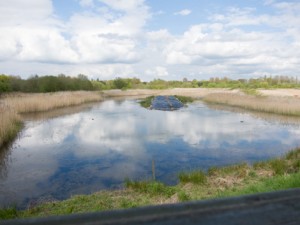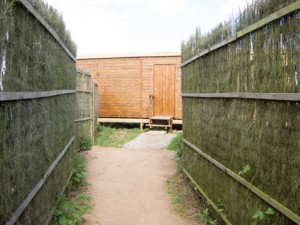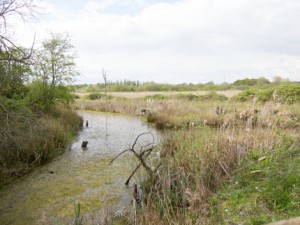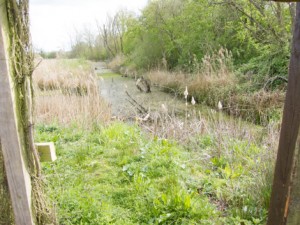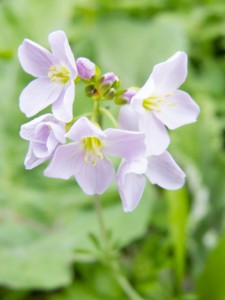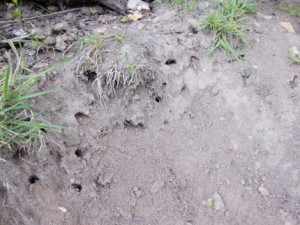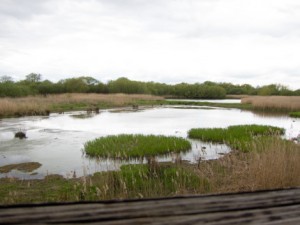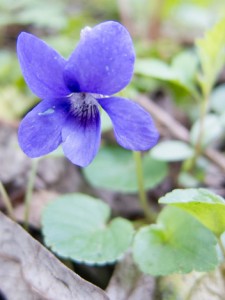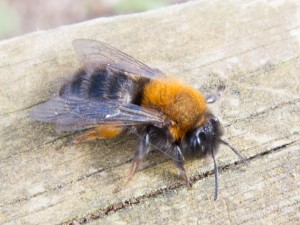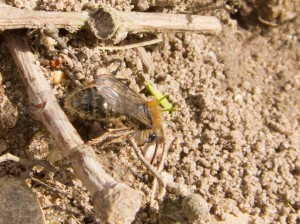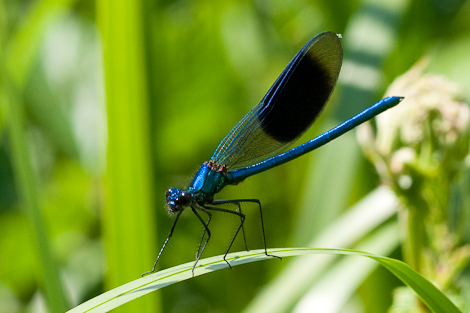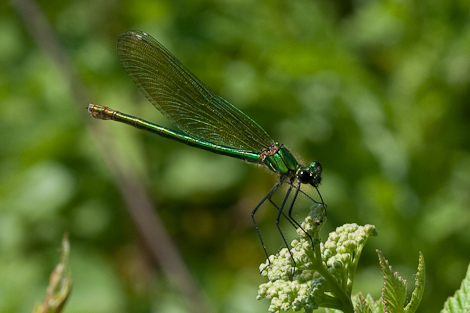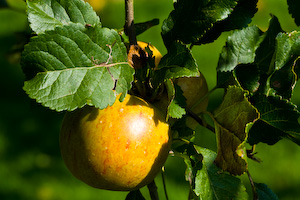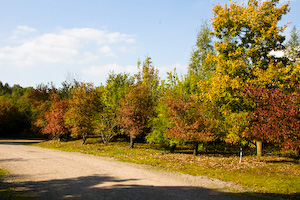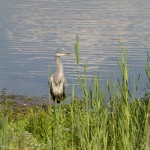So, the reason why I often find myself disappointed with Brandon Marsh is because on my first visit there I was spoilt with fantastic views of kingfishers and a hobby from the Carlton Hide. I haven’t seen a hobby there since and it’s a while since I spotted a kingfisher there (I have in fact seen both of these at Daventry Country Park). The Carlton hide should offer fantastic views of waders and water birds. But it doesn’t. Last time I went the bird count was similar to that at the Teal Pool Hide – aka nothing. So I was set for disappointment when I opened the shutters (there was no one else there). But, today, my view was filled with house martins and swallows darting about in front of the hide, chasing insects over the reed beds, twittering to each other and performing aerial acrobatics.
View from the Carlton Hide
I saw another whitethroat at close range and saw my first black cap of the year – a male (I’d heard plenty, but not seen any so far). There were reed or sedge warblers about – I think sedge and I got a good view of a female reed bunting darting about in the reeds – as they do I suppose. There was a cuckoo up here too, although I still couldn’t see it and it sounded some distance away.
In the last few years they have extended the reserve, the latest addition being some screens up at Newlands, overlooking more of the reed bed. Or at least that was what was there last time, now they have a new hide!
The Ted Jury Hide
These are the views left and right through the screens:
But when I went in and opened up the shutters, oh my, what a view, it nearly took my breath away:
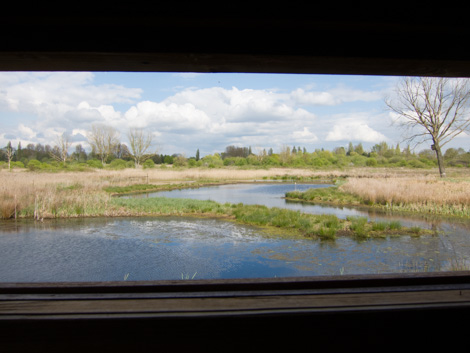 There was a constant burble from the house martins hunting in the reed beds in even larger numbers, but there wasn’t a lot else that I could see. Still, it is early days and these things tend to take some time to settle down. I waited a while in case an osprey turned up – after all they’d kindly erected a platform for him to land on, but not surprisingly, he didn’t show. Still there were plenty of house martins and sand martins to keep me mesmerised. I realised that the sand martins were much easier to differentiate than I thought, even at speed (theirs, not mine). They don’t have the white rump that their cousins the house martins have and they also make a very different sound, more squawky than the tweeting of the house martins. I hate to say it, but a hobby would have had good hunting round there today.
There was a constant burble from the house martins hunting in the reed beds in even larger numbers, but there wasn’t a lot else that I could see. Still, it is early days and these things tend to take some time to settle down. I waited a while in case an osprey turned up – after all they’d kindly erected a platform for him to land on, but not surprisingly, he didn’t show. Still there were plenty of house martins and sand martins to keep me mesmerised. I realised that the sand martins were much easier to differentiate than I thought, even at speed (theirs, not mine). They don’t have the white rump that their cousins the house martins have and they also make a very different sound, more squawky than the tweeting of the house martins. I hate to say it, but a hobby would have had good hunting round there today.
I worried about getting back before they closed the gates, but couldn’t resist going towards one of the hides and out towards a different part of the reed bed in the hope that I might find a Cettis warbler as I’ve heard them round that side most years. However, on this occasion they disappointed and I didn’t hear anything. I wandered further along and met a couple of gentlemen who were going the opposite way and told me that there was always a grasshopper warbler singing in the nearby marshy areas if I just stopped and listened. A grasshopper warbler – that would be a lifetime first for me. Although, going by my sedge / reed warbler dilemma the chances of me actually recognising it were close to zero. Still I stood and listened. And, I heard a sedge warbler or was it a reed warbler. I waited and then I heard it, very faint, but definitely, something that really did sound like a stridulating grasshopper. Amazing – what a day.
I didn’t hear it again, although I wandered along the path by the reed bed. I did hear other warblers and, some sounded less scratchy than the sedge warblers I’d been listening to and they didn’t seem to stop to start again. Hearing them side by side I am pretty sure that I did hear a reed warbler, so, although I still haven’t seen one, I have now heard one. After all, the whole point of warblers is their song.
